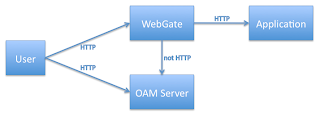Integrating ADFS 2.0/3.0 IdP with OIF SP By Damien Carru-Oracle on Apr 07, 2014 As a continuation of my previous article, I will today describe how to integrate ADFS 2.0/3.0 as an IdP and OIF as an SP. Be sure to have read my previous entry covering the pre-requisites . The SAML 2.0 integration will be based on: Email address will be used as the NameID format The NameID value will contain the user’s email address The HTTP POST binding will be used to send the SAML Assertion to the SP Users will exist in both systems, with each user having the same email address so that it can be used as the common user attribute. ADFS 2.0 is available in Windows 2008 R2, while ADFS 3.0 is available in Windows 2012 R2. The articles will showcase screenshots for ADFS 3.0, while the documented steps will apply to both versions. ADFS Setup To add OIF as an SP in ADFS IdP, perform execute the following steps: Go to the machine where ADFS 2.0 is deployed If ADFS 2.0 is ...
